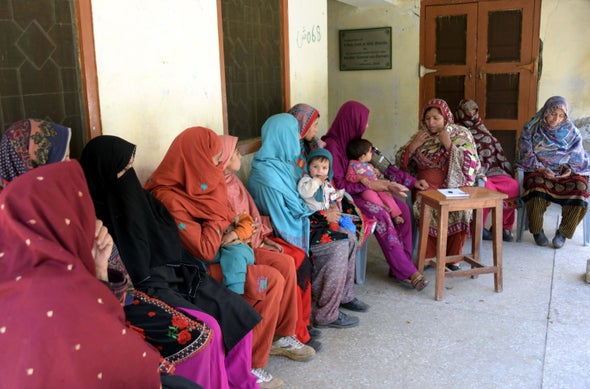One in three cases of maternal sepsis can be prevented with a single dose of antibiotic, a study in low- and middle-income countries shows
Thank you for reading this post, don't forget to subscribe!
To prevent these infections during a cesarean section, doctors routinely administer an antibiotic called azithromycin before beginning surgery. Now a global study in low- and middle-income countries shows that the same approach may prevent sepsis in vaginal deliveries, too. In settings with limited health care resources, giving people planning to give birth vaginally a single dose of azithromycin lowered their risk of sepsis by 35 percent. Because azithromycin is inexpensive and can be taken orally, this approach may be a feasible way to prevent some cases of maternal sepsis in countries with limited health care access, where sepsis during or after childbirth is more common. The results were published on Thursday in the New England Journal of Medicine.
The study is “such an incredibly exciting story because it adds to our ability to take better care of these women and ultimately to hopefully change their outcomes,” says Laura Riley, an ob-gyn at Weill Cornell Medicine in New York City, who was not involved in the research.
The study followed nearly 30,000 participants from seven countries: Bangladesh, India, Pakistan, Zambia, Kenya, the Democratic Republic of the Congo and Guatemala. The researchers followed the participants for more than a month after they gave birth. Of the participants who received the antibiotic, 1.6 percent experienced sepsis, compared with 2.5 percent of those who did not receive the treatment. This was a larger decrease than the study’s architects had anticipated, and the participants experienced minimal side effects. The antibiotic did not impact the rate of newborn infections or deaths.
“We were excited,” says Alan Tita, an ob-gyn at the University of Alabama at Birmingham and the study’s lead author. “It’s just awesome because of the potential to make a huge difference in the care and outcomes for patients.” The research team had planned to enroll more participants, but the early results were conclusive enough to end the study early.
“It’s a wonderfully pleasant surprise to see an effect that large,” says Michael Santos of the Foundation for the National Institutes of Health, one of the funding partners of the study. “That’s a really spectacular result.”
If a person survives sepsis, it can cause lifelong damage. “You can lose fingers and toes and do damage to internal organs like your kidneys and your liver and your brain,” Riley says.
Fortunately, sepsis is often preventable. “I do think that the study alone may be enough to change practice,” says Lindsay Admon, an ob-gyn studying health equity at the University of Michigan, who was not involved in the study. The rate of maternal mortality in the U.S. has been increasing since the late 1990s and is more than twice as high as it is in other wealthy nations. Here the racial inequality is stark, with Black people being nearly three times more likely to die from childbirth as white people, according to the Centers for Disease Control and Prevention. Admon would like to see a similar study done in the U.S. and other high-income countries that nonetheless have large health disparities.
The benefit of prescribing azithromycin for sepsis prevention needs to be weighed against the consequences of overusing antibiotics, however. These drugs save lives, but in the process, they pressure bacteria to find a way to evade them. Drug-resistant bacteria are on the rise, and they can be deadly. Azithromycin in particular targets a wide range of bacteria, which is why it works well in childbirth. Yet this amplifies its risk of leaving drug-resistant microbes behind. This trade-off is crucial to weighing the benefit of this intervention, says Mercedes Bonet Semenas, a medical officer at the World Health Organization’s Department of Sexual and Reproductive Health and Research, who wasn’t involved in the new paper.
“That question is on everyone’s mind and was part of the study design,” Santos says. The researchers are continuing to analyze samples taken from participants to determine the drug’s precise effects on the naturally occurring bacteria in their patients’ body. They expect those results to be published in 2024.
Preventing sepsis may be worth the risk of contributing to antibiotic resistance in areas of the world where infections during childbirth are common. “The study is the first step,” says Julie Gerberding, CEO of the Foundation for the National Institutes of Health. Getting the medication to those who can use it most will require a coordinated global effort. The WHO could review the results and choose to include the treatment in its essential medicines program, as well as its guidelines for obstetric care, Gerberding says.
Maternal mortality is a “conspicuous area of inequality,” she says. “Now this is a chance to tackle a very, very dangerous dimension of birth.”
ABOUT THE AUTHOR(S)
Allison Parshall is a science journalist, multimedia editor, podcast host and current news intern at Scientific American. Follow her on Twitter @parshallison
